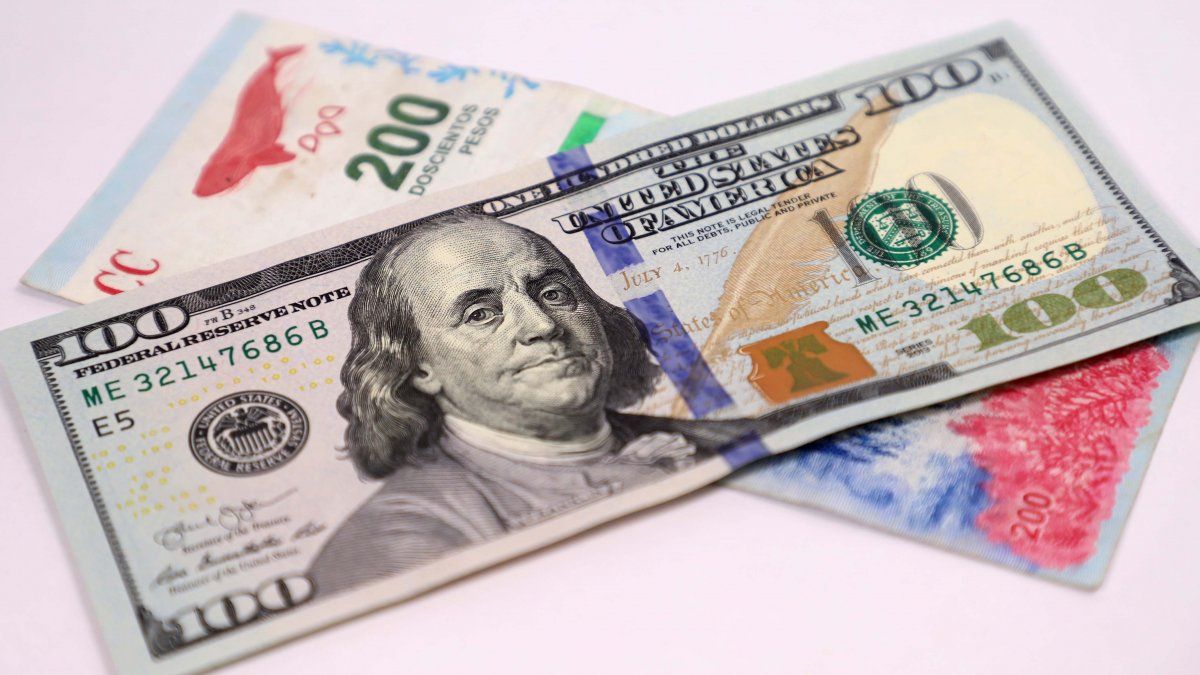In this way, the official exchange rate would accumulate a rise of 51.1% throughout the current year, a figure that, however, is located behind an expected inflation of 59.2% for the same period. While the projected price increase rose significantly from the previous REM, the projected rate of devaluation contracted slightly.
Likewise, for the next 12 months (that is, from now to March 2023), the consulting firms and financial entities that participated in the survey carried out in March estimated an increase in the dollar of 53.5%, against inflation that would be 55, 4% in the same period of time.
In this way, the market continues to warn that the BCRA will accelerate, as it has been doing, the rate of devaluation, but that the adjustment will run far behind inflation. It is worth noting that when the dollar jumps, it usually impacts prices at the local level, which implies a risk in the face of the current inflationary dynamics in the country, and in the world.
Despite the fact that few days of the month have still passed, this figure makes it the most important advance since at least January 2021. The entity led by Miguel Pesce raised the official exchange rate to 1.3% in December, 2.2% in January, 2.3% in February and 3.3% in March.
However, for the first time in the year, the official depreciation exceeds the interest rate in pesos. In 2022, the BCRA raised the reference rate three times. In January it took it from 38% to 40%, in mid-February to 42.5% and in March to 44.5%. The market now expects a new increase as a result of the new rate of depreciation and after the publication of the CPI for March (Indec will release it this Wednesday), which could be around 6%.
Andres Reschini, of F2 Financial Solutions, maintained that his impression is that the Central has already chosen the rate of depreciation for April and that it will be around 4%. “If you want to sustain this rate of crawling peg, there will probably be a new rate hike after knowing the CPI for March, because those who have to liquidate dollars know that they earn more by waiting than liquidating and placing a rate, and that discourages liquidation and affects to reserves,” he said.
Adrian Yard Buller, economist at Facimex Valores, agreed in the analysis: “The devaluation rate is expected to accelerate to the area of 3.8% per month starting in April. The program with the IMF was planned with a 40% devaluation that the BCRA had been respecting, but that was designed for an inflation of 48% that quickly became outdated. With inflation that is going to be closer to 60%, the BCRA has to speed up the pace so as not to appreciate the exchange rate, especially considering that the first reserve target was just met. Rate hikes look more at the exchange front than at inflation.”
“The BCRA needs to raise rates if it wants to continue accelerating the rate of devaluation, since if it devalues above rates it will undermine its own reserve objective. If not, it ends up discouraging exports, since exporters prefer to leverage themselves and wait for a more favorable exchange rate. This is crucial since the Central Bank has a demanding objective of net reserves and, if it does not adjust interest rates, it will have difficulties to buy dollars. That is why the logic would be to see a rise in rates of important magnitude next week”, added Yarde Buller.
For Victor Becker, director of the Center for Studies for the New Economy, the acceleration of the devaluation rate is directly linked to the inflation rate, in line with what was agreed with the IMF, that there be no exchange delay. “With this level of inflation, the BCRA is going to have to increase the interest rate. Both the acceleration of the crawling peg and the rise in rates can help, to the extent that it can generate a greater sale of dollars by exporters. Likewise, a higher rate benefits placements in pesos and takes pressure off the parallel exchange market, allowing the gap to be narrowed even more,” said Beker.
For its part, Martin Carro, a member of the UNDAV Public Policy Observatory, warned about the dichotomy faced by the Central. “Among the objectives of the economic team is to maintain competitiveness because a trade surplus of goods is needed to meet all the uses of foreign currency and to increase reserves. However, a sharp depreciation can complicate price acceleration and impact growth,” she posed.
In this sense, he concluded: “A rate hike is likely, on the one hand, due to the signals given by the BCRA in the face of inflationary acceleration and, on the other, the market preferred shorter investments, because a new rise is expected. Banks currently place as little as possible in long terms with the BCRA. Likewise, a depreciation rate higher than the interest rate discourages the liquidation of exports. That is why one would expect a rise in interest rates since it gives more room to be able to depreciate at different speeds without achieving disincentives and avoiding problems on the external front, where it is quite strangled and with objectives to meet to increase reserves, around u$ s5,000 million annually”.
“Inflationary prospects continue to slide upwards above 60%,” said the consultancy delphos-investment and pointed out that “in the monetary aspect, the sterilization during the first quarter of this year was carried out by the Treasury instead of the Central Bank. However, the BCRA would resume its contractionary role in monetary matters in the coming months, while it would decide further rises in interest rates so as not to lose track of the inflationary rhythm”.
“The low expectations of compliance with the agreement with the IMF in fiscal and monetary matters – aggravated by the war in Europe -, the high inflation at the starting point, the need to recompose some relative prices after the failure of nominal ‘electoral’ anchors ‘, are some of the elements that suggest that, once again, the official inflation guidelines will be overtaken by reality,” he said. Daniel Artanafrom FAITHFUL.
“The possibility of complying with the guidelines of the plan with the IMF for financial balance could give rise to greater stability and chances of recovering the value of the suffered local papers,” he said. VatNet researchalthough he pointed out that “however, the bitter political and social disputes add another factor of tension in the event of unexpected developments, suggesting the convenience of a predominantly conservative strategy.”
“Argentina has so far tried magic recipes: a fixed dollar, interest rates, maximum prices or care. Always partial visions of reality, instead of having a comprehensive and convergent anti-inflationary program: all the variables –fiscal, monetary, foreign exchange, revenues – must point to a descending inflation that anchors expectations, which now move like a ship aimlessly, without a correct path”, said the former president of the Central Bank (BCRA) in radio statements Martin Redrado.
“While waiting for the inflation data (…), which is discounted, it would show an acceleration, the operators are attentive to the greater rhythm that the central bank (BCRA) has been deploying in the ‘crawling-peg’, and as a correlate of all this a possible new rise in the rate,” said Gustavo Berfrom Estudio Ber.
“When they talk about magical programs that solve inflation overnight, such as dollarization, we must take into account what effects this has on people’s income. At what exchange rate would we dollarize? The impoverishment of our income is the most important discussion, beyond a magical solution that we know does not exist in the economy”, estimated in radio statements the economist Candelaria Botto.
“The urgency to achieve results in the short term tends to underestimate the costs in the medium term and overestimate the benefits in the short term. But even so, the current restrictions of the ‘start up’ would make it very difficult to implement dollarization in the short term by the costs that this implies,” said Gustavo Reyes, from IERAL of the Mediterranean Foundation.
“The monetary authority (BCRA) maintains its buying stance in the single and free exchange market -MULC-, but with an increasingly limited margin of manoeuvre”, he estimated. Personal Portfolio Investments.
“The first rounds of April are being marked by a lower liquidation of agriculture. The agro-export sector has been liquidating at an average daily rate of 138 million dollars, falling back with respect to the daily average of March by 142 million,” he explained.
“Although the economy will return to its maximum levels next year, this does not indicate that the ground lost in recent years has already been recovered: on the one hand, consumption will be far from what it was then, due to a real wage that It will be far from equaling its level of 2017. On the other hand, it will occur in a context of poverty more than 10 pp higher Both symptoms reflect the main problem: the population will have grown 6% in the period, so the same cake will have to distribute among more people”, estimated Ecolatina.
Source: Ambito
David William is a talented author who has made a name for himself in the world of writing. He is a professional author who writes on a wide range of topics, from general interest to opinion news. David is currently working as a writer at 24 hours worlds where he brings his unique perspective and in-depth research to his articles, making them both informative and engaging.




